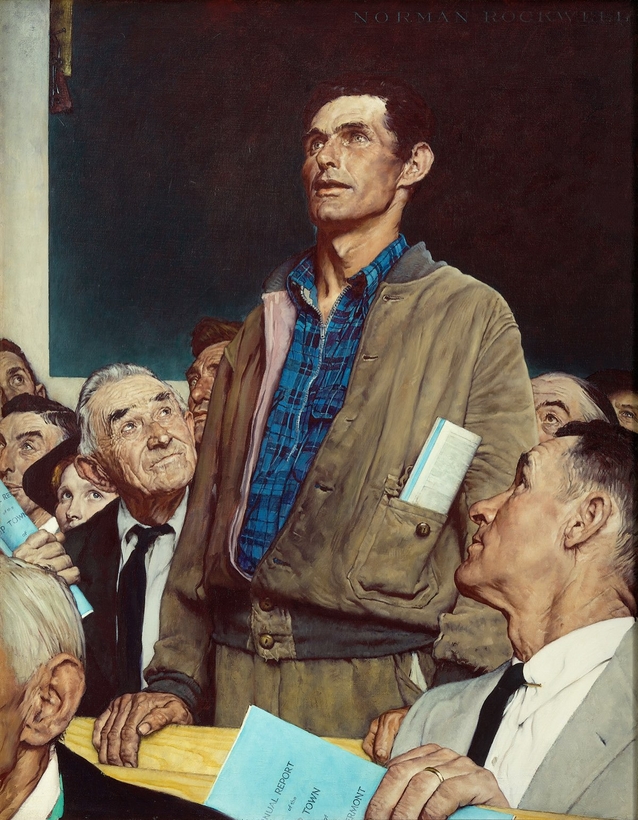On December 7, 1941, the Japanese attack on Pearl Harbor would force the United States into World War II. As President Franklin Roosevelt had said almost a year earlier to Congress, on January 6, “At no previous time has American security been as seriously threatened from without as it is today.” Roosevelt then enumerated the four freedoms that were necessary for a nation to survive. Working from his home in Arlington, Vermont, Norman Rockwell, one of America’s most celebrated artists and illustrators, labored throughout the next year to complete a series of paintings for The Saturday Evening Post that illustrated those principles. His sequence, Rockwell hoped, would serve a purpose “bigger than a war poster,” while making “some statement about why the country was fighting the war.”
In spite of the artist’s typical worries that his finished product wouldn’t be good enough, Rockwell’s portrayals of the “Four Freedoms” were finished at last at the end of January, 1943. Freedom of Speech materialized from a town meeting where someone spoke out against a planned school building, and those both for and against allowed the neighbor to talk. Suddenly Rockwell realized, There it is.
His sequence, Rockwell hoped, would serve a purpose “bigger than a war poster.”
Freedom of Worship depicts individuals of every age, race, and religion grouped together in “prayerful contemplation,” basking in a reassuring glow. Freedom from Want suggests a typical American family (actually Rockwell’s own) enjoying a bountiful Thanksgiving feast. And finally, Freedom from Fear shows a mother and father tucking their children into bed, a cozy harmony contrasted by the headline of the newspaper that dangles from the father’s left hand: the word “BOMBINGS” relays the violence in Europe.

The artist’s “Four Freedoms” reaped effusive praise from President Roosevelt. “I think you have done a superb job in bringing home to the plain, everyday citizen the plain, everyday truths behind the Four Freedoms,” he wrote Rockwell. As of February 20, 1943, The Saturday Evening Post would feature one painting per month, all four of which the citizenry lauded. The Office of War Information (O.W.I.) proudly printed 2,500,000 posters of the images, and before long was trying to keep up with the more than 2,000 requests daily. Although Rockwell was pleased with his success, he barely paused to appreciate it: as usual, he was off to his next project.
The popularity of the paintings has not waned. The exhibition “Norman Rockwell: American Freedom” has been to New York; Washington, D.C.; and Caen, in Normandy, for the 75th anniversary of D-day. It is currently at Houston’s Museum of Fine Arts, and then goes on to Denver, followed by a return to Stockbridge, Massachusetts. The paintings are meant for the ages, from the hands of a master. —Laura Claridge

